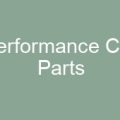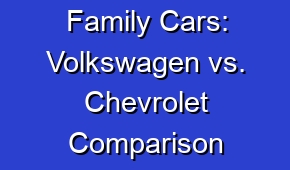Car Maintenance Checklist

Car Maintenance Checklist: Ensure peak performance and longevity by regularly checking oil, filters, tires, brakes, lights, and fluids. Don’t skip scheduled maintenance to avoid costly repairs and breakdowns. Stay safe on the road!
Regular car maintenance is crucial to ensure the longevity and performance of your vehicle. Following a comprehensive car maintenance checklist can help you stay on top of essential tasks. Start by checking the engine oil, tire pressure, and brake fluid regularly. Inspect the brake pads for wear and tear, and replace them if necessary. Don’t forget to check the battery for corrosion and ensure it has a proper charge. Regularly inspect the belts and hoses for any signs of damage or leaks. Finally, keep an eye on the fluid levels such as coolant and windshield wiper fluid, and top them up as needed. Following this car maintenance checklist will help keep your vehicle running smoothly and avoid costly repairs.
| 1. Regularly check your tire pressure to ensure optimal performance and safety. |
| 2. Change your engine oil and oil filter as per manufacturer’s recommendations. |
| 3. Inspect and replace worn-out windshield wipers for clear visibility during rain. |
| 4. Keep your car clean to prevent rust and maintain its overall appearance. |
| 5. Check and refill all essential fluids, including coolant, brake, and power steering. |
- 6. Replace the air filter regularly to improve fuel efficiency and engine performance.
- 7. Check and tighten all loose bolts and nuts to ensure a safe driving experience.
- 8. Inspect and replace worn-out brake pads for effective braking and safety.
- 9. Regularly clean and inspect your battery terminals for optimal electrical connections.
- 10. Rotate your tires at recommended intervals for even wear and extended tire life.
What is a car maintenance checklist and why is it important?
A car maintenance checklist is a list of tasks that need to be regularly performed to keep a vehicle in optimal condition. It includes essential maintenance tasks such as checking fluid levels, inspecting tires, and changing oil. Regular maintenance helps prevent breakdowns, extends the lifespan of the vehicle, and ensures safe and efficient operation.
How often should I perform car maintenance?
Regular car maintenance should be performed as per the manufacturer’s recommendations, usually outlined in the vehicle’s owner’s manual. It typically includes scheduled maintenance intervals based on mileage or time, such as oil changes every 5,000 miles or every six months.
What are some common car maintenance tasks?
Common car maintenance tasks include checking and topping up fluids (oil, coolant, brake fluid), inspecting and replacing filters (air, oil, fuel), checking and rotating tires, inspecting and replacing worn-out belts and hoses, and regularly cleaning and lubricating various components.
How do I check the oil level in my car?
To check the oil level in your car, park it on level ground, wait for the engine to cool down, locate the dipstick, pull it out, wipe it clean, reinsert it fully, and then pull it out again to check the oil level. The dipstick will have markings indicating the minimum and maximum levels. Ensure the oil level is within the acceptable range.
What are signs that my car needs new brakes?
Signs that your car may need new brakes include squeaking or grinding noises when braking, vibrations or pulsations in the brake pedal, longer stopping distances, a soft or spongy brake pedal, or a dashboard warning light indicating brake issues. If you experience any of these signs, it’s important to have your brakes inspected and serviced.
How often should I replace my car’s air filter?
The frequency of air filter replacement depends on various factors such as driving conditions and the type of air filter used. As a general guideline, it is recommended to check the air filter every 12,000 miles or once a year. If it appears dirty or clogged, it should be replaced.
What are the benefits of regularly rotating my car’s tires?
Regularly rotating your car’s tires helps ensure even wear, extends tire life, improves fuel efficiency, and enhances overall handling and safety. It allows each tire to experience different positions on the vehicle, equalizing wear and maximizing their performance.
How often should I change my car’s spark plugs?
The recommended interval for changing spark plugs varies depending on the type of spark plugs and the vehicle manufacturer’s guidelines. As a general rule of thumb, spark plugs should be replaced every 30,000 to 100,000 miles or as specified in the owner’s manual.
What are the consequences of driving with a failing battery?
Driving with a failing battery can lead to various issues such as difficulty starting the vehicle, dimming headlights, electrical malfunctions, and eventually complete battery failure. It is important to address battery issues promptly to avoid being stranded and potentially damaging other electrical components in the vehicle.
How can I improve my car’s fuel efficiency?
To improve your car’s fuel efficiency, ensure proper tire inflation, use the recommended grade of motor oil, avoid excessive idling, maintain a steady speed, reduce unnecessary weight in the vehicle, and perform regular maintenance such as air filter replacement and spark plug changes.
How often should I replace my car’s cabin air filter?
The frequency of cabin air filter replacement depends on factors such as driving conditions and the quality of the air filter. As a general guideline, it is recommended to check and replace the cabin air filter every 15,000 to 30,000 miles or once a year to ensure clean air inside the vehicle.
What are the signs of a failing alternator in a car?
Signs of a failing alternator in a car include dimming headlights, a dead battery or difficulty starting the vehicle, flickering dashboard lights, unusual noises from the engine, a burning smell, or a dashboard warning light indicating a charging system problem. If you experience any of these signs, it’s important to have the alternator inspected and repaired.
How can I check the tire pressure in my car?
To check the tire pressure in your car, use a tire pressure gauge and unscrew the valve cap on each tire. Press the gauge onto the valve stem and read the pressure indicated on the gauge. Compare it to the recommended tire pressure specified in the owner’s manual or on a sticker located on the driver’s side door jamb.
What are the benefits of regular engine oil changes?
Regular engine oil changes help lubricate the engine components, reduce friction and wear, remove contaminants, improve fuel efficiency, and prolong the engine’s life. Fresh oil with proper viscosity ensures optimal engine performance and protects against potential damage caused by dirty or degraded oil.
How often should I flush and replace my car’s coolant?
The recommended interval for flushing and replacing coolant varies among vehicle manufacturers. As a general guideline, it is often recommended to flush and replace coolant every 30,000 to 50,000 miles or every five years. However, it’s essential to consult the owner’s manual for the specific recommendations for your vehicle.
What are the signs that my car needs a wheel alignment?
Signs that your car may need a wheel alignment include uneven or rapid tire wear, pulling to one side while driving, a vibrating steering wheel, or the vehicle not tracking straight on a flat road. If you notice any of these signs, it’s advisable to have your wheel alignment checked and adjusted as necessary.
How can I extend the life of my car’s battery?
To extend the life of your car’s battery, ensure proper battery maintenance by keeping the terminals clean and free of corrosion, avoiding excessive heat exposure, minimizing short trips and frequent starts, and regularly inspecting the battery for any signs of damage or deterioration.
What are the consequences of driving with worn-out tires?
Driving with worn-out tires can result in reduced traction, longer braking distances, poor handling, increased risk of hydroplaning, and reduced overall safety. It is crucial to regularly check tire tread depth and replace tires when they become worn to ensure optimal performance and minimize the risk of accidents.





















